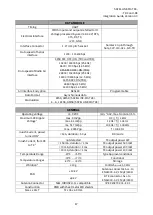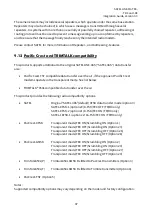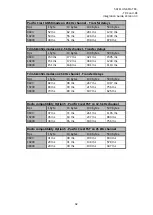
SATELLINE-M3-TR3,
–
TR4 and -R4
Integration Guide, Version 3.0
30
8.2
Data buffering
Whenever the radio modem is in
Data Transfer Mode
it monitors both the radio channel and the
serial interface. When the terminal device starts data transmission the radio modem switches to
transmission mode. At the beginning of each transmission a synchronisation signal is
transmitted and this signal is detected by another radio modem, which then switches into
receive mode. During the transmission of the synchronisation signal the radio modem buffers
data into its memory. Transmission ends when a pause is detected in the data sent by the
terminal device, and after all buffered data has been transmitted. When the serial interface
speed is the same or slower than the speed of the radio interface, the internal transmit buffer
memory cannot overflow. However, when the serial interface speed exceeds the speed of the
radio interface, data will eventually fill transmit buffer memory. In this instance, it will take a
moment after the terminal device has stopped transmission of data for the radio modem to
empty the buffer and before the transmitter switches off. The maximum size of transmit buffer
memory is one kilobyte (1 kB). If the terminal device does not follow the status of the CTS-line
and transmits too much data to the radio modem, the buffer will be emptied and the
transmission is restarted.
In the receive mode, the buffer works principally in the above described way thus evening out
differences in data transfer speeds. If the terminal device transmits data to a radio modem in
receive mode, the data will go into transmit buffer memory. Transmission will start immediately
when the radio channel is available.
















































